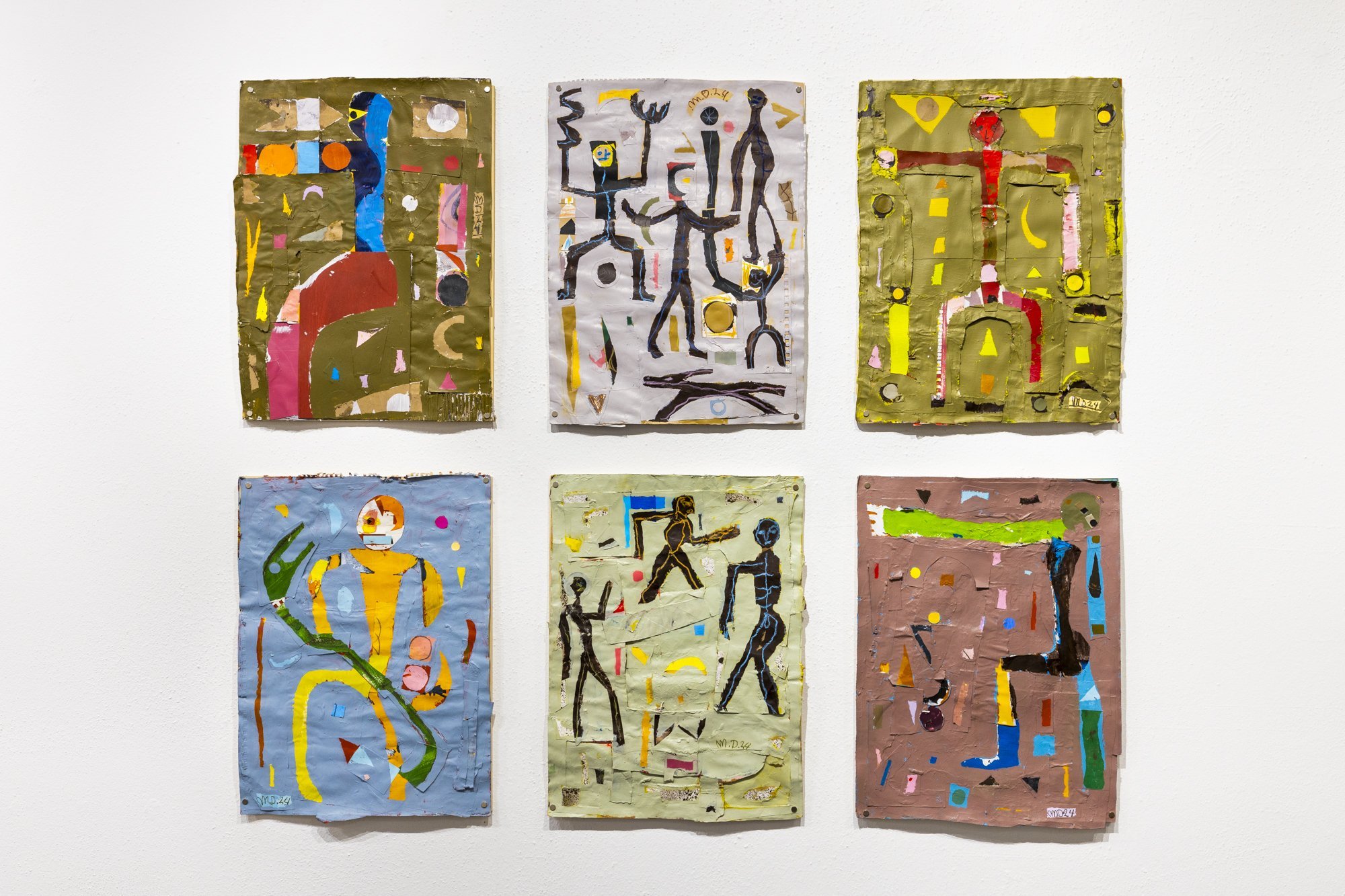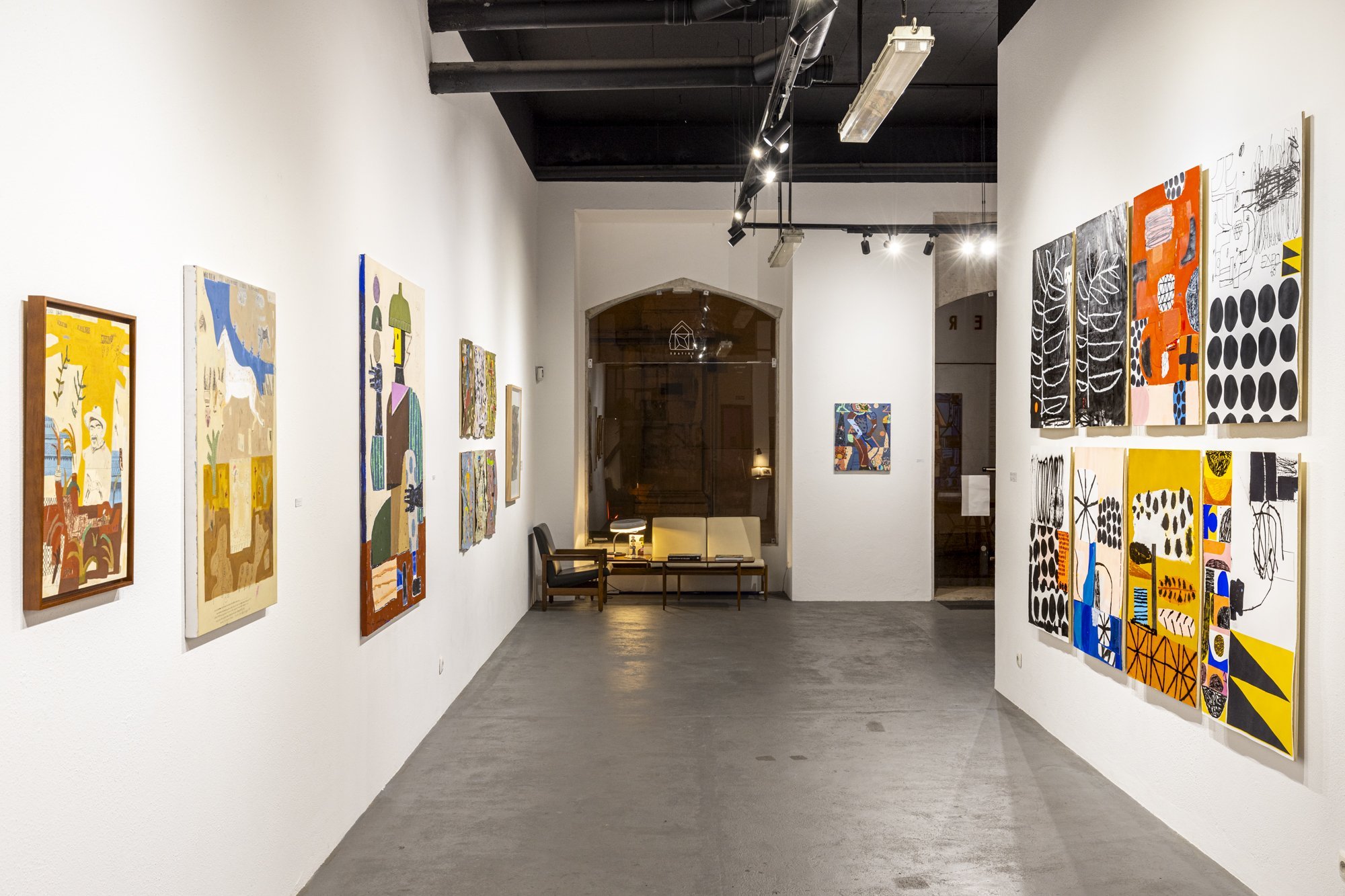Exhibition Highlight: States of Play (Part I)
By Alexander Picoult
States of Play, presented by Eritage Art Projects from March 27th to May 26th, 2024 is a joint exhibition with collaborative work from six artists: Abel B Burger (France), Jamel Armand (Netherlands), Kylie Wentzel (South Africa), Mafia Tabak (Austria), Martin Daiber (Chile), Stephen Smith (United Kingdom).
States of Play (Part I) | Exhibition View
Curation Statement:
We all play; it is a universal requirement.
We begin our lives in a state of play and constant discovery. Encouraged to free-flow, bang the drum, bark like a dog, imagine the spoon is an aeroplane flying into your mouth..
It is playing that allows us to first touch and fully grasp the world.
Playing is problem solving; building blocks and a jigsaw puzzle piece, or the unmistakable sound of a child searching for just the right piece of Lego. Playing comes before words and is a language of its own.
“Children learn through play, adults play through art” -Brian Eno.
Playing is story telling too; imagining and exaggerating, early man scratching bison on the wall and slapping muddy hand prints to decorate a cave, making a home and sharing stories with your tribe.
Playing is lying and trickery, a card illusion or puppets performing for people in the street.
“All the world’s a stage, and all the men and women merely players.” -William Shakespeare.
As we age, we as individuals and as a species continue to play but the playing becomes more serious, there are rules. Play fighting becomes war and survival. Games become sport with losers and sacrifices. Battles play out on global political Chess boards, taking and shaking lands and lives, playing God with guns and medicines, diseases and displacement.
We gamble too, we love risk and a feeling of being lucky; the higher the stakes the greater the prize. Perhaps it is the chance of losing that makes winning so sweet and intoxicating.
We play with our bodies, all singing, all dancing, kicking and punching our way into fun and games; but ultimately it is in our brain where the playing really takes place. Our minds are playgrounds, full of fears and fantasies, when we dream we play without a second thought, making connections and joining the dots.
Whether we look to music, sport, comedy or food, it is in the human mind that the rules for play are imagined and boundaries for play are defined. There are thin lines, nuanced and contextual, what is celebrated in a boxing ring would be punishable in the street, a comedy punchline out of place could start a culture war. The way we play and the shared experience of playing is a measure of the individual and the collective human condition.
Art may be one of the few places where playing remains pure and childlike, where the winning and losing go hand in hand like two sides of the same coin. Artists push and pull the work to a point where it can not return, a place where the prize is the process itself.
In a world obsessed with being first, fast, right and rich, Art feels like one of the few places where it is safe to fail, and playing is still taken seriously without anybody getting hurt.
- David Shillinglaw
States of Play opens with Martin Daiber’s The Painter, the epitome of self-discovery as it results from play. The seated figure holds up his own creation: a self-portrait. The figure’s work becomes an inscription of his lived experience and a validation of non-linear, non-traditional expression of self. The self-portrait in the image bears a stark contrast to the figure’s environment as it remains more simple and polished in comparison to the heavily geometric and partitioned background. Such a distinction reveals the powerful impact that playfulness enacts on the reinvention of perspective and reinterpretation of existence.
Martin Daiber | 06 paper assemblages, 45x60cm
Stephen Smith | acrylic, oil stick, collage on paper, 70 x 100cm
Like The Painter, many works in States of Play engage a myriad of media, adding a three-dimensional component and enhancing overall visuality. Daiber’s six paper assemblages, Smith’s eight compositions, and Armand’s Spirited, all engage in this multimedia approach. The combination of textures that arises from torn paper and cardboard mixed with paint and typography is reminiscent of childlike crafting. To broaden one’s use of material and embrace the physicality of rough objects indicates a detachment from the highly-structured life of the grown adult, tainted by corruption and social anxieties. A return to childlike sensibilities, however, is the purest form of observation of the natural world and consequently, internal growth.
Abel B Burger | The Pleasant Dream, 70 x 100 cm
Abel Burger introduces a childlike state of wonder with her hybrid works of typography and image. The Pleasant Dream utilizes poetry and portrayals of retro cartoons to evoke a dreamlike condition. As stated in her mission, the use of poetry opens up a “parallel world, one concerned with the poetry of sleep & returns to mythology and the dream state as a way to delve into humanity's sense of belonging.” The words ‘paint to buy a horse’ and ‘paint to have a good life’ evoke a sense of childhood manifestation and the nostalgia of hopefulness, as well as position painting (and art as a whole) as a means of reaching bliss.
Burger’s Prairie speaks of another life in which ‘we have summers and winters / and every morning I… / put another log on yesterday’s fire…’ The poem concludes with a bittersweet longing for a state where she ‘[doesn’t] need to dream anymore.’ For Burger, a return to the free-spirited longings of childhood brings a melancholy realization that adult life is the anti-dream-state. Without play, grownup life is monotonous and lacks the carefree qualities of Prairie’s composition. In this dream world, two suns exist against the laws of nature, the plains are wide open, and the spirit of life is untamed by civilization.
Mafia Tabak artworks
Mafia Tabak’s pieces are distinguished by their anti-dimensionality in this exhibition. In I miss you in my dreams and when I wake up I miss the dream of you, Tabak’s self-described ‘Naive art’ does not conform to the traditional way of visualizing three-dimensional space. Tables rest on top of roofs, roofs on top of chairs, and houses erupt from walls. The title suggests that this disorderly view arises from a longing for connection, and perhaps creates a visual representation of a dream world in its purest form.
Tabak believes that his ‘‘badly’ coloured colouring pictures show that he purely and simply did not forget the joy of unschooled creation.’ The pieces take advantage of the rough paper on which they were created, revealed by the crosshatchings of crayon. Roughness, therefore, plays a pivotal role in understanding that purity does not arise from visual organization, but rather an unrestricted experimentation of material. In this way, Tabak emulates a state of play that defies any conception of ‘correct’ or ‘ideal’ ways of creating art and visual interest.
States of Play (Part I) | Exhibition View
States of Play works to create an environment where individuality and uninhibited explorations of color, form, material, and composition take place. Through unfiltered experimentation, these six artists demonstrate that a deeper connection to the soul, and thus, one’s ability to create art, establishes them as a contributor to society, discovery, and the search for knowledge.







